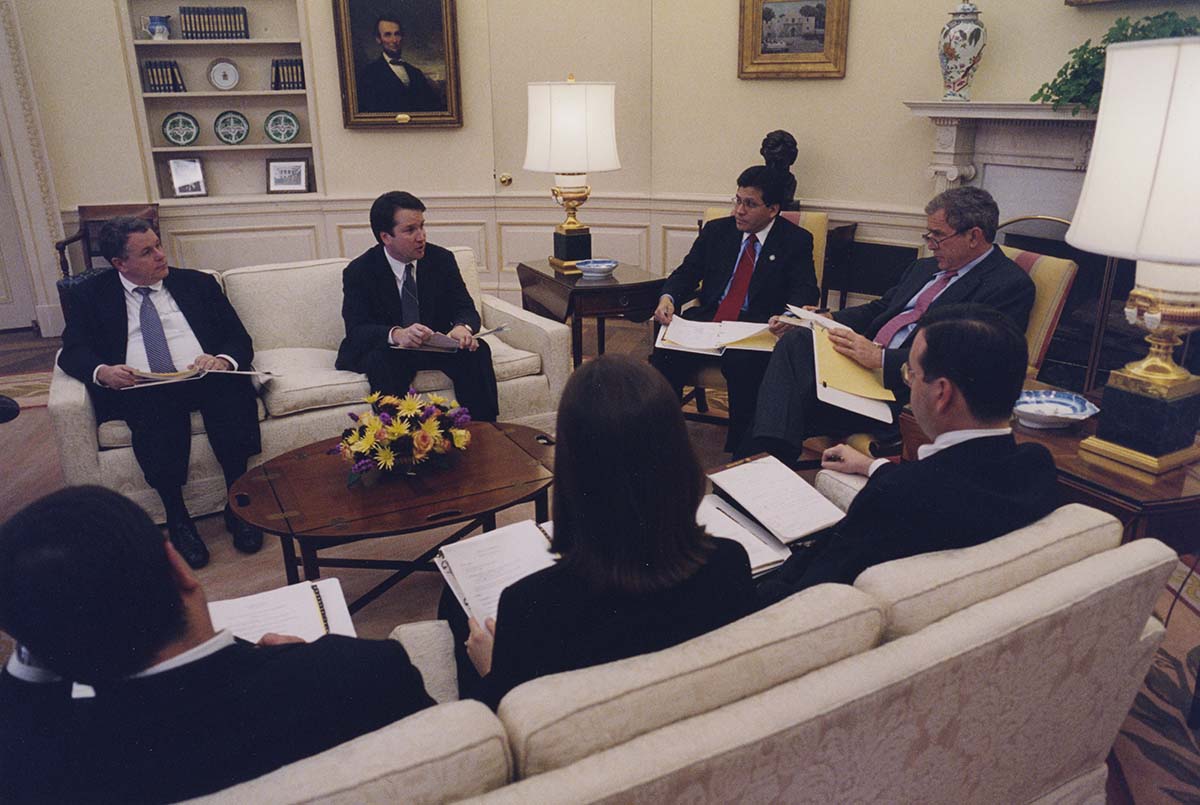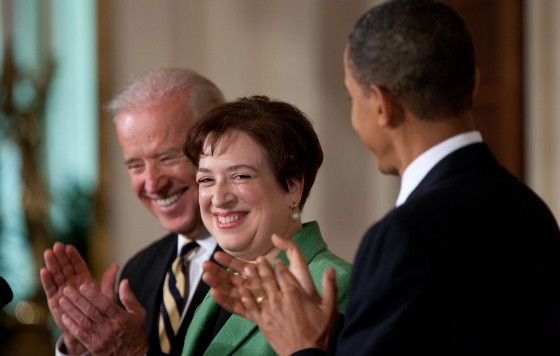

“As Board members, we wondered, ‘If this case were to be lost, what would that actually mean? Would the Board have to give back all the money it had collected over the past six years? Would the Board members be personally liable for all of the Board's debts? Would we essentially fire everyone and close our doors? What are the chances of getting Congress to act? What other changes would it want to make to the PCAOB along the way?’”
~ Daniel L. Goelzer, Acting PCAOB Chairman as the Board waited for the Supreme Court to rule on FEF v PCAOB
From its inception, the Sarbanes-Oxley Act galvanized intense opposition and detractors who argued the bill imposed enormous direct and indirect costs on publicly traded companies and would make American business uncompetitive. In December 2005, the Consumer Enterprise Institute, a libertarian think tank, published a paper asserting that the PCAOB’s structure and the process for appointing and removing Board Members under SOX violated the U.S. Constitution.

The issue had been raised while SOX was being drafted. Specifically, there were concerns that the Board’s structure violated the separation of powers doctrine and the Appointments Clause, both under Article II of the Constitution. Two future Supreme Court justices would review the law as it was being crafted, and both would play substantial roles as the case made its way to the Supreme Court. As they wrote the Act, Senate Banking Committee staff solicited opinions from several Constitutional scholars, including Elena Kagan, then a professor at Harvard Law School, and a future Solicitor General of the Department of Justice and Supreme Court Justice. At the same time, the Bush White House had its Counsel’s office review the bill, where staff attorney Brett Kavanaugh, future D.C. Circuit Judge and Supreme Court Justice expressed a concern that the bill infringed on Presidential power.

Notably, SOX did not contain a severability clause, which allows a portion of an act that might be found illegal to be severed and struck down without invalidating the entire act. Several legal scholars, including those at CEI, believed a ruling against SOX might cause the entire law to get thrown out. “We had been on the lookout for potential clients to represent on a pro bono basis,” said Sam Kazman, General Counsel of CEI.
Within a couple of months, CEI found a client in a one-partner audit firm, Beckstead & Watts, LLP, based outside of Las Vegas, Nev. Managing Partner Gordon Brad Beckstead had been handling more than 60 audits each year for micro-cap and development companies, businesses with little-to-no operations, assets or market capitalization. Using a risk-based inspection protocol, the PCAOB had selected Beckstead & Watts as one of the first small firms to be inspected. In May 2004, seven PCAOB inspectors arrived at Beckstead & Watts for a two-week inspection of the firm. They analyzed 16 engagements and found significant deficiencies in half of them.
“The inspection was akin to the New York Giants playing the local high school in a game of football,” Beckstead said in a statement. (1)
Although the PCAOB’s Inspection leaders later modified their approach for smaller firms, sending fewer inspectors for a shorter period of time, the PCAOB did not back down from its findings regarding Beckstead & Watts. The PCAOB released the public portion of the inspection report on Sept. 28, 2005 and opened a formal investigation into the firm the same day, requesting additional information on five audits. (2)
“The investigation was the straw that broke the camel’s back,” (3) said Beckstead who felt the Board forced him to conduct audits so extensive that small, over-the-counter companies could not afford to pay for them.
Beckstead & Watts and CEI filed a lawsuit against the PCAOB based on the unsatisfactory inspection report. The suit was later joined by the Free Enterprise Fund (FEF), an anti-tax, conservative, advocacy organization. Mallory Factor, the FEF chairman, admitted that the suit was “an attack” on all of the Sarbanes-Oxley Act. (4) The suit was announced Feb. 7, 2006, at a luncheon and news conference at the National Press Club.
Heavy hitters from the conservative constitutional bar signed on for the plaintiffs, including Michael A. Carvin, a leading appellate partner from the Washington, D.C.-based law firm Jones Day; Kenneth Starr, a special prosecutor in the Monica Lewinsky scandal; and Viet D. Dinh, former U.S. Assistant Attorney General for legal policy. Hans F. Bader and Sam Kazman from CEI rounded out the legal team.
The PCAOB’s General Counsel, Lewis H. Ferguson III, delayed his planned departure from the regulator to line up the PCAOB’s legal representation. According to Ferguson, SEC Chairman Chris Cox suggested that the PCAOB hire a conservative, boutique Washington, D.C. law firm to mount its defense. Several Board members objected and wanted to make their own decision. Ferguson interviewed many Supreme Court advocates. At the same time, former SEC General Counsel and future PCAOB Chairman James R. Doty, then a partner at the Baker Botts law firm, reached out to the PCAOB to recommend his partner, Jeffrey A. Lamken, whom the board hired. Lamken and his colleague Robert K. Fry represented the Board through the Supreme Court decision.
The case was filed in the U.S. District Court for the District of Columbia, which, on March 21, 2007, granted summary judgment in favor of the PCAOB. The plaintiffs appealed and, on April 15, 2008, the case was argued before a three-judge panel of the D.C. Circuit. The D.C. Circuit upheld, by a vote of 2 to 1, the District Court’s ruling of summary judgment on Aug. 22, 2008.
Circuit Judge Brett Kavanaugh penned a lengthy, impassioned dissenting opinion writing “never before in American history has there been an independent agency whose heads are appointed by and removable only for cause by another independent agency, rather than by the President.” (5) Kavanaugh also pointed out, “under this statute, the President is two levels of for-cause removal away from Board members, a previously unheard-of restriction on and attenuation of the President’s authority over executive officers.” (6)
The plaintiffs petitioned for a rehearing before all nine judges of the D.C. Circuit Court and again lost in a razor-thin decision, 5 to 4. The plaintiffs then sought review by the Supreme Court and were granted a writ of certiorari on May 19, 2009.
Critics of the PCAOB voiced their opposition to the regulator and the Sarbanes-Oxley Act as the case progressed. In a 2009 editorial on the lawsuit, Steve Forbes of his eponymous magazine dubbed the PCAOB “the accounting version of Nurse Ratched from One Flew Over the Cuckoo’s Nest” and called it “one of the most powerful and destructive agencies in Washington.” (7)
Oral arguments took place Dec. 7, 2009. Solicitor General Elena Kagan argued on behalf of the United States, which had intervened in the case. Lamken argued for the PCAOB, while Carvin represented the plaintiffs. Among the many amicus briefs filed in support of the PCAOB were briefs from the Council of Institutional Investors; The Center for Audit Quality, an advocacy and policy association formed by the large public company audit firms and the AICPA; former Chairmen of the SEC; and the National Association of State Boards of Accountancy.
While confident in its arguments and legal team, the Board spent considerable time and resources writing contingency plans as the case made its way through the courts. Acting Chairman Daniel L. Goelzer oversaw the drafting of a proposal that would shutter the PCAOB and spin off all its functions to the SEC.
During that precarious time, Goelzer praised the PCAOB staff for an unrelenting dedication to their work, despite the uncertainty of the PCAOB’s future. He acknowledged the lawsuit made hiring more difficult as potential employees wondered if the organization would be abolished by a Supreme Court decision. He also explained that while the Board was hobbled with only four Board members, it was not feasible for the SEC to name a new PCAOB Chairman or replace the two Board Members whose terms had expired while the case was pending.
Board Member Charles D. Niemeier felt time was on the PCAOB’s side during the litigation, “The longer it took for the case to go through the system, the better it was for us because I had faith that if we stayed in existence long enough, the fruits of our labor were going to pay off.”
As happens every spring, when the Supreme Court term is coming to an end, interested parties huddle around their computers every Monday to see if a ruling has been made. The PCAOB decision came down to the wire, as it was released June 28, 2010, the last day of the session. By then, the PCAOB Public Affairs Office had prepared two versions of a press release, one addressing a win and another for a loss. But suddenly staffers had to draft new text to reflect the surprise ruling that the Supreme Court was “affirming in part and reversing in part the judgment of the Court of Appeals in favor of the PCAOB.” (8)
Echoing the concerns raised by Judge Kavanaugh’s dissent, the Supreme Court found the provision that Board Members could only be removed “for cause” unconstitutional because it violated the separation of powers doctrine and deprived the President of the power to hold Board Members accountable. However, the Court rejected the plaintiffs’ Appointments Clause argument and had no trouble finding the “for cause” removal provision severable. With surgical precision, the Supreme Court cut the limitations on removing Board Members from the Act, allowing them to be removed “at will” and fixed the problem without sending the legislation back to Congress. As a result, the PCAOB was able to continue its operations without any interruption.
“The Supreme Court, in its great wisdom, found a way to find us unconstitutional, but then correct it with a couple of word changes,” said Charley Niemeier.

“We always thought that, if we lost, the removal provision could easily be severed, but waiting for the decision to be rendered on the last day of the Term was undeniably nerve-wracking,” said Gordon Seymour, who had taken over management of the litigation after Ferguson left in 2007.
By the time the decision was handed down, the Free Enterprise Fund was largely defunct with most of its staff having moved on to different organizations. “There was a bittersweet irony in that we did win a victory on the central legal point, but unfortunately, we were not in a position to execute the other aspects of our plan,” said Philip G. Kerpen, Policy Director of FEF, which wanted to reopen SOX and reform Section 404 to make it much less costly.
Beckstead & Watts eventually settled its lawsuit with the PCAOB in February 2011. The PCAOB agreed to remove its Sept. 28, 2005 inspection report from its website.
The FEF v PCAOB decision has proved to be an important precedent for the structure of statutorily created independent regulators, including the Consumer Financial Protection Bureau. It also made the PCAOB Board Members job security more tentative and political. Ultimately, the PCAOB survived the existential threat of the Supreme Court challenge, and was able, without interruption, to continue to oversee public company audits in order to protect investors and promote the public interest.

Following the lawsuit, SEC Chairman Mary Schapiro, with the help of her senior advisor and former PCAOB Board Member Kayla Gillan, named three new members of the Board. Baker Botts partner Jim Doty was tapped as Chairman. Former General Counsel Lew Ferguson returned to the PCAOB as a Board Member, and Jay D. Hanson, a veteran auditor from McGladrey & Pullen, was named the first former audit partner to the Board.
With both the implementation of Section 404 and the Supreme Court challenge behind them, new PCAOB Chairman Doty laid out an agenda aimed at improving auditor independence, skepticism, and the auditor’s report.
(1) Accounting Today, “Beckstead and Watt Settles Inspection Case with PCAOB,” Feb. 23, 2011
(2) Ibid.
(3) Ibid.
(4) CFO, Risk & Compliance, “Sarbox Takes A Constitutional,” by David Katz, Feb. 14, 2006.
(5) “Free Enterprise v PCAOB, 537 F.3d 667, [686] (DC Cir. 2008) (Kavanaugh J. dissenting)
(6) Ibid.
(7) Forbes Magazine, “Evil Agency -- And It Ain’t the CIA,” by Steve Forbes, June 4, 2009.
(8) PCAOB Press Release, “Decision in Free Enterprise Fund v. PCAOB,” June 28, 2010.